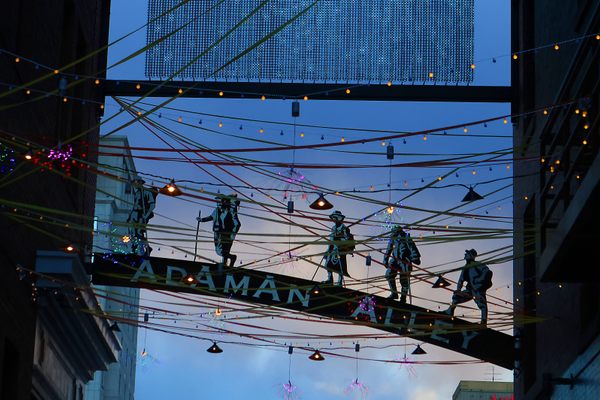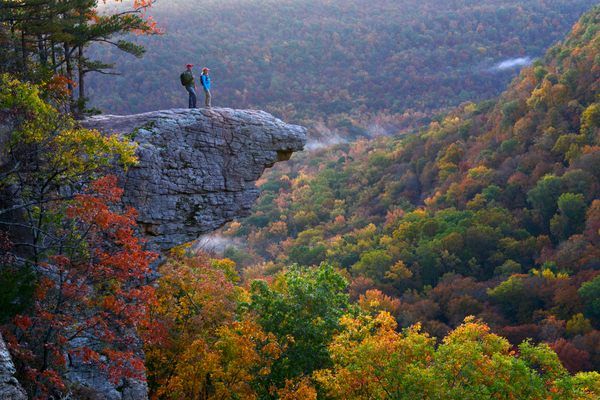Flørlitrappene
These 4,444 wooden steps straight up a mountain were built to serve a hydroelectric power station but these days, they're mostly used by hikers.
Deep into the spectacular Lysefjord, close to the Kjerag big walls, the tiny, roadless settlement of Flørli is best known for its 4,444 steps straight up the mountain. The longest wooden stairway in the world, the Flørlitrappene reaches an elevation of 750 meters above sea level. Following its path along the old trolley railway and rusty water pipes, anyone who accepts the challenge will be rewarded with jaw-dropping views of the fjord and its surrounding mountains. It’s still a relatively quiet, hidden gem if compared to the more famous Stavanger region hikes, such as the overcrowded Preikestolen and iconic Kjeragbolten that are just around the corner.
In 1916, construction began on the hydroelectric power plant which supplied electricity to the city of Stavanger until 1950. At its peak in 1917, a total of 142 people were employed at the plant, which still was quite small with only 13 permanent residences ever built near the site. During the 70 years following, the steps have lost their original purpose and now mostly serve adventurers from around the world.
Nowadays, these remarkable stairs in Norway make up part of the Tripp Trapp Triathlon, which includes running, biking, and kayaking. The 4,444 stairs fall under the “running” section and records lie, incredibly, around 30-34 minutes. Normally, the hike up takes about two hours of hard work. Alternatively, people might divert and opt for the shorter, “family-friendly” 700 step-loop. If one does choose the full track, at around 900 steps a side path leads to a small river where they can bathe in the shallow water. Very nice and refreshing!
Climbers are not supposed to come back down the steps after climbing up, because it’s difficult—and dangerous—to pass visitors going the opposite direction. Instead, the hike down follows another route that entails another three hours along a rugged mountain path. The steps are steep, uneven, and can be quite slippery at the top, if not at all covered by snow.
Every 500 stairs are marked, so climbers will have a good sense of how many stairs are still to come. It might help to wear gloves, since the railings above 1,000 stairs are mostly made of wire, adding difficulty to the various sections with very narrow steps. Luckily, there are three places where one can sit and rest along the climb.
Know Before You Go
Flørli is serviced by four ferries per day. There’s a hostel, camping, rental apartments, kayak rental shop and a museum that exposes its hydropower in the big “power hall.” And in summer, visitors can rest and enjoy themselves at the Power Café.


























Follow us on Twitter to get the latest on the world's hidden wonders.
Like us on Facebook to get the latest on the world's hidden wonders.
Follow us on Twitter Like us on Facebook